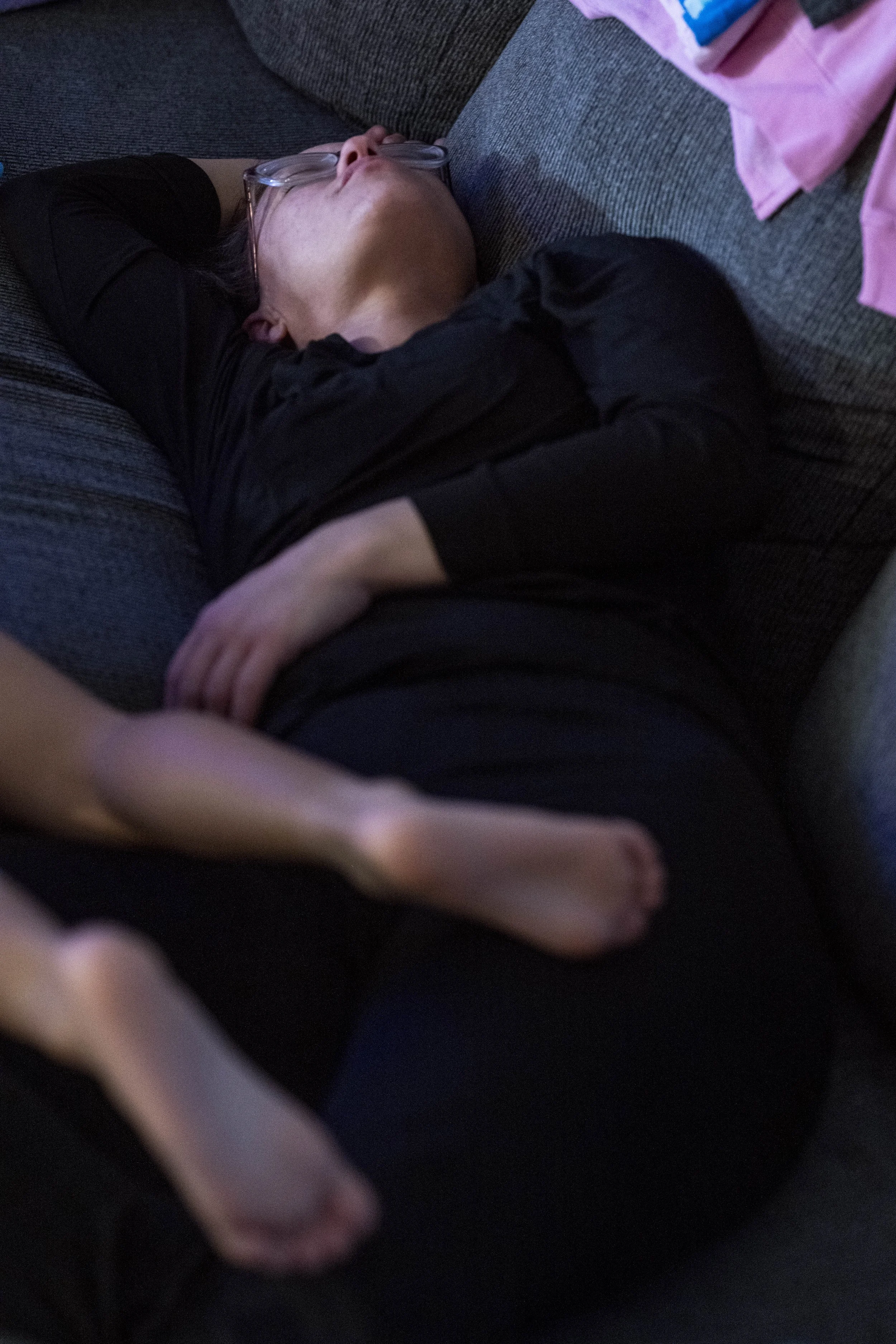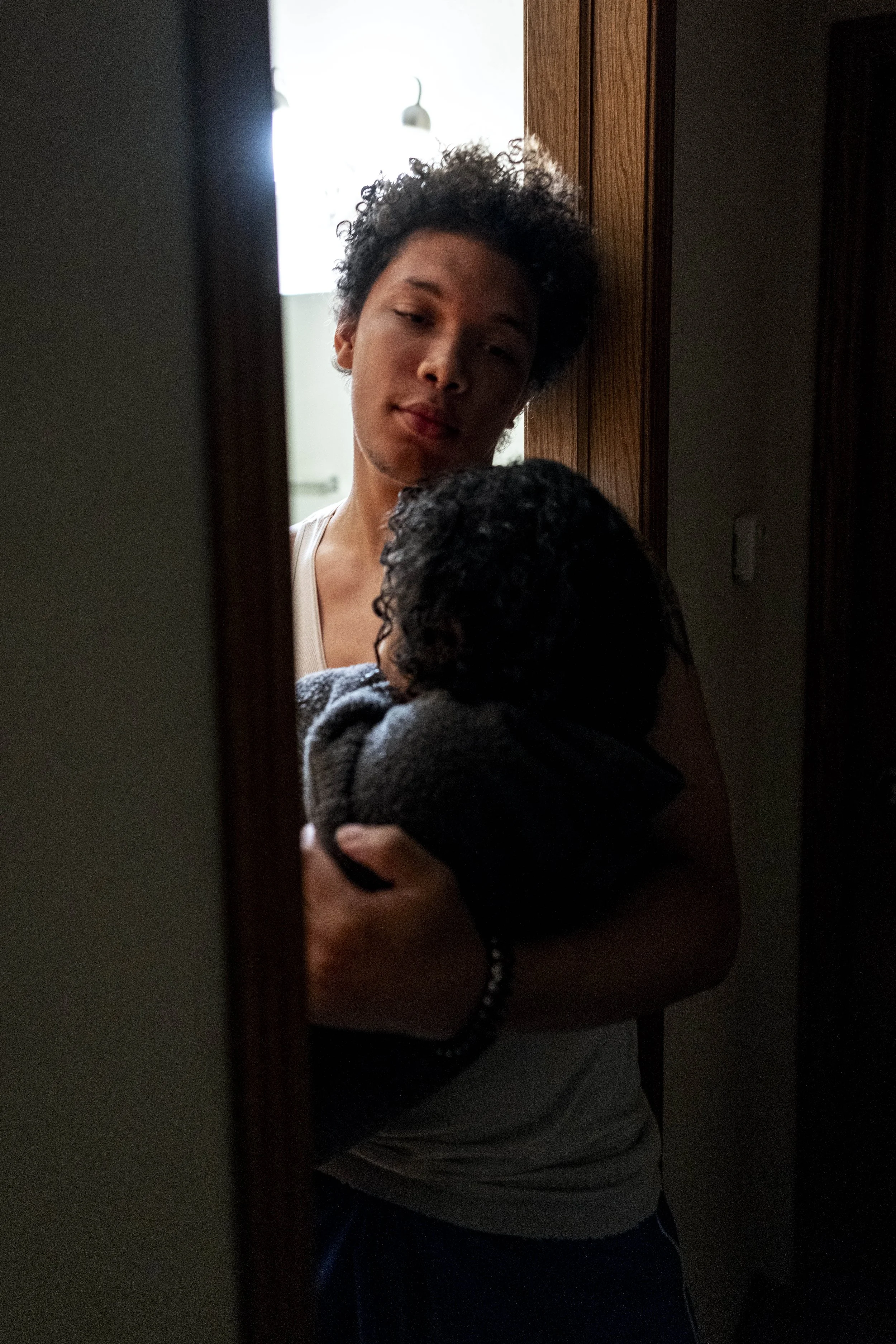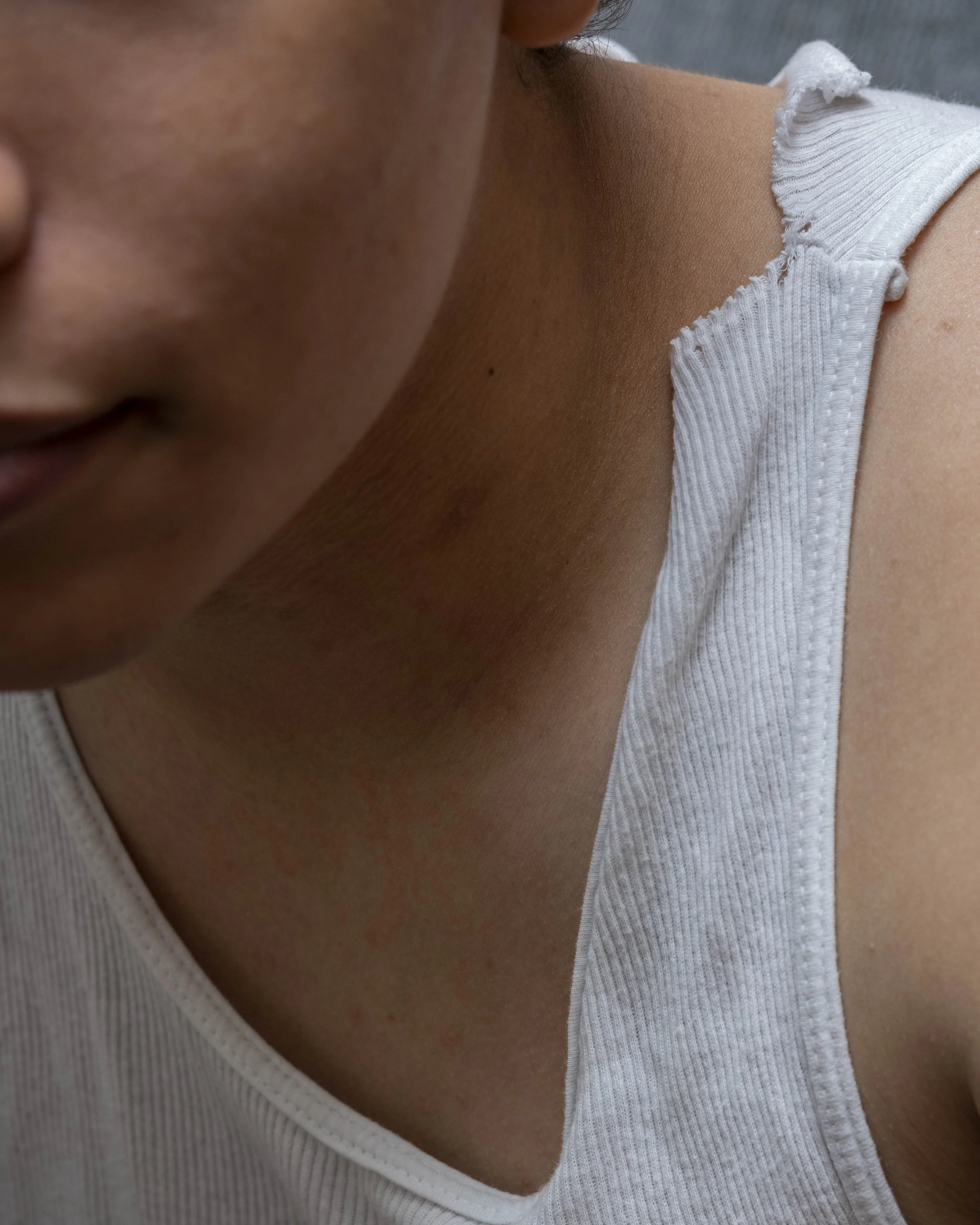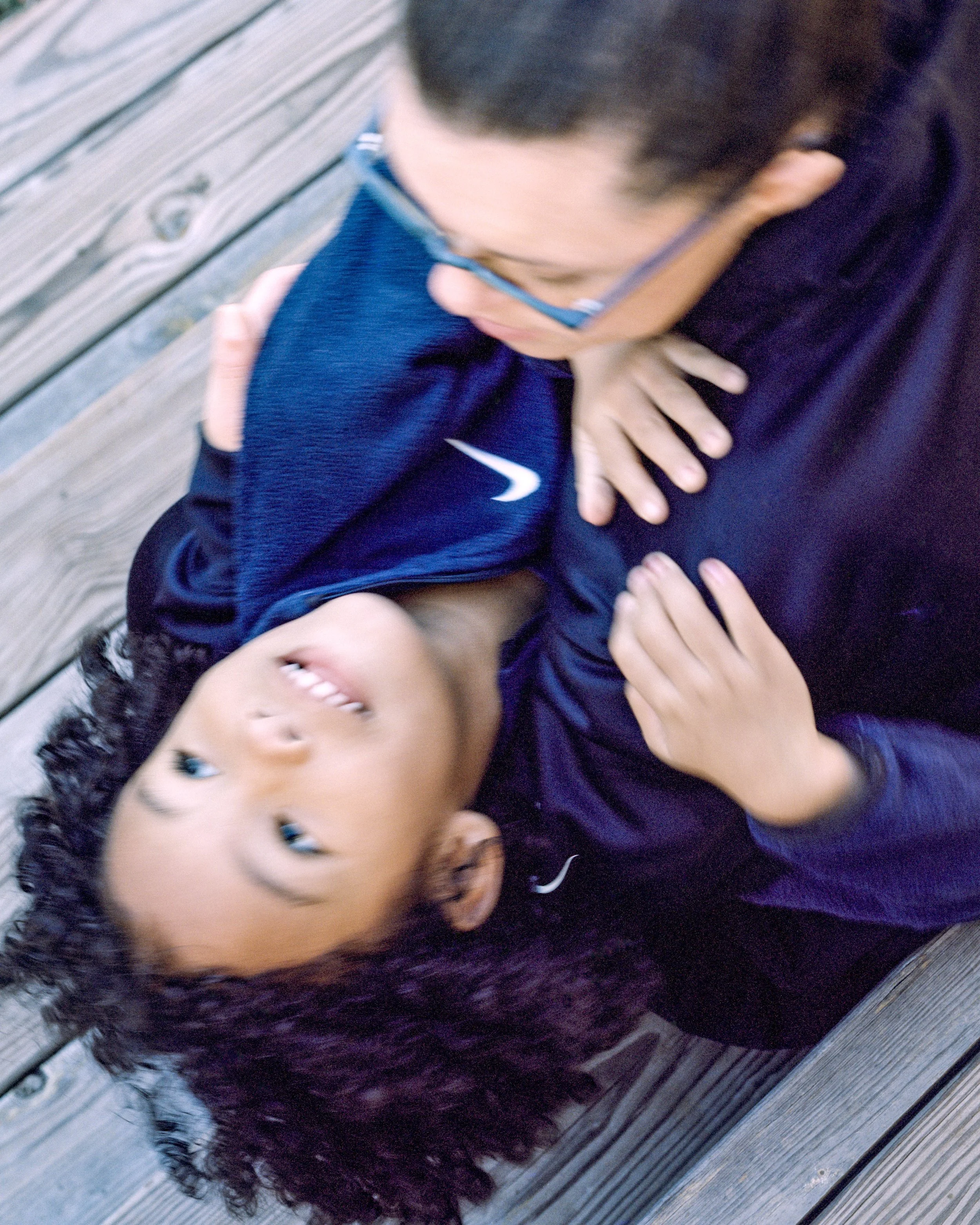Artist Statement
The work you see is titled Unseen Labor. My work would likely be much different if it wasn’t for the production of Ironbound. The book centers around Yolanda Bass, a mother I interviewed whose story stayed with me. She spoke about the life she left behind, the career she walked away from, the friendships that faded, the parts of herself she gave up to become a homemaker. Her husband, an ironworker, was rarely home, he was and still is committed to providing for the family in the only way he knew how. But when he was present, he was emotionally distant. Yolanda carried the weight of the household alone. Her story reminded me of my own mother—the labor she performed daily, the sacrifices she made without recognition. It made me think deeply about the kind of work we rarely value as a society. the care work, the emotional labor, the quiet endurance of women holding families together behind closed doors. That realization led me to Kara.
Kara and I met while working the line at Smithfield Foods. We worked the night shift—6 p.m. to 6 a.m.—and during those long hours, I’d catch up with Kara daily. She’d tell me about her daily routines with her kids, Herbert, Kelis, and Keyana. The school events, the appointments she had rushed to, we laughed and vented, and talked about the many sleepless days. By the end of the week, I could see the exhaustion setting in—I could hear it in her voice. She moved more slowly, sometimes even falling asleep on our line. I was concerned for Kara, and I still am. So I reached out to Kara, originally envisioning a traditional documentary project inspired by W. Eugene Smith’s Country Doctor—something observational. I planned to spend at least a week at a time with her family, photographing Kara during the day and her children in the evenings because I understood that lifestyle. The responsibilities the older siblings hold. The unstable, chaotic nature that can come with being a child of a single mother. My sisters and I lived that lifestyle while our mother pulled long shifts at the Advanced Auto factory. We learned to rely on one another.
However, that approach quickly changed. The more time I spent with the family, the more involved I became. One afternoon, Kara slept through all her alarms— 2:45, 2:55, 3:05. I stood there, unsure. Should I intervene? Should I stay silent and let the moment pass? Who would pick up Kelis from school... and eventually, I shook Kara awake, and she rushed out the door, still half-asleep. I rejected the detached model. I embraced a more collaborative process, blending candid, posed, and still life photographs. I worked closely with Kara and her kids to create images that reflect the physical, emotional, and psychological tolls of their lives. Within the photographs, there’s a rhythm of falling apart and being put back together. I’m tracing Kara’s mental and physical state as the days stretch on, showing what it means to barely hold it all together, and to try again tomorrow.
This work is an act of care and resistance. It’s about Kara, yes, but also about my mother. It’s about Herbert, Kelis, and Keyana, and the quiet strength of children who carry each other when no one else can. It’s about the unseen labor of mothers, the sacrifices that remain unspoken. I don’t see this work as separate from my own story. My mother is in every frame, even if she isn’t pictured. I’m trying to honor her. And I’m trying to honor all the women like her, like Kara, like Yolanda, who keep moving, who keep giving, who have stories worth telling.












